Abstract
Among the cut flowers produced in Japanese agriculture, lilies in particular are attracting attention. According to the latest data for 2022, lily shipments nationwide have reached 110 million lilies, with the cultivated area reaching a maximum of 635 hectares. Past trends show that lily production has been steadily increasing, with the area planted expanding to meet demand. This trend is due to the immense popularity of yuri both in Japan and abroad. Lilies are also deeply rooted in Japan’s seasonal scenery and culture, which is one of the factors supporting demand. In addition, technological innovation and improved cultivation methods are leading to improvements in productivity and quality. Overall, lily production is an important part of Japanese agriculture and is expected to continue to grow.
Lily shipping volume (main data).
Lily shipments in Japanese agriculture have undergone interesting changes between 1976 and 2022. At its peak in 1998, 208 million lilies were shipped nationwide, but this number has been gradually decreasing since then. Current shipping volumes are about half of what they were at their peak, suggesting that there have been some changes in lily demand and production. This may be due to changes in society and consumer tastes, competition from other cut flowers, and advances in agricultural technology and cultivation methods. In addition, shipping volumes vary from region to region, which is likely due to climatic conditions and the characteristics of the production area. On the other hand, demand for lilies remains strong, and they continue to be loved as a flower deeply connected to the climate and culture of Japan. Going forward, various efforts in lily production will be required to keep up with changes in demand and advances in technology.
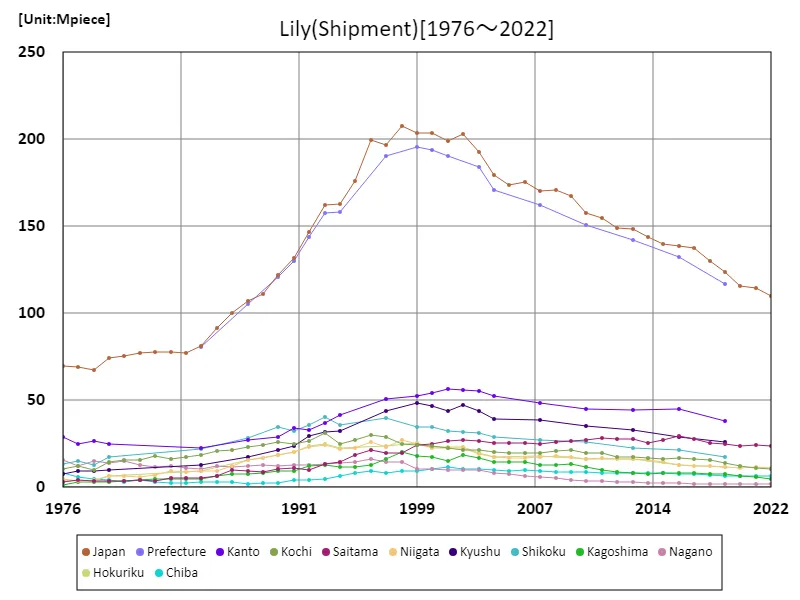

The maximum is 208Mpiece[1998] of Japan, and the current value is about 52.9%
Lily shipping volume (by prefecture).
The latest figure for 2022, in which the volume of cut flowers shipped in Japan’s agriculture was compiled by prefecture, saw Saitama Prefecture record the highest volume overall, at 23.6 million flowers. This data makes it clear that Saitama Prefecture is a particularly noteworthy region for cut flower production. A notable feature so far is that the Kanto region, including Saitama Prefecture, is known as a major cut flower producing region, and its rich natural environment and warm climate are thought to be ideal for production. In addition, being located near the city, it has good access to the metropolitan area, which is likely contributing to supplying properties to urban areas with high demand. Another factor is that efficient production is now possible in the Kanto region, including Saitama Prefecture, due to advances in agricultural technology and the introduction of greenhouse cultivation. In the future, it is expected that the cut flower industry in the Kanto region, centered on Saitama Prefecture, will continue to develop and maintain an important position in the cut flower market throughout Japan.
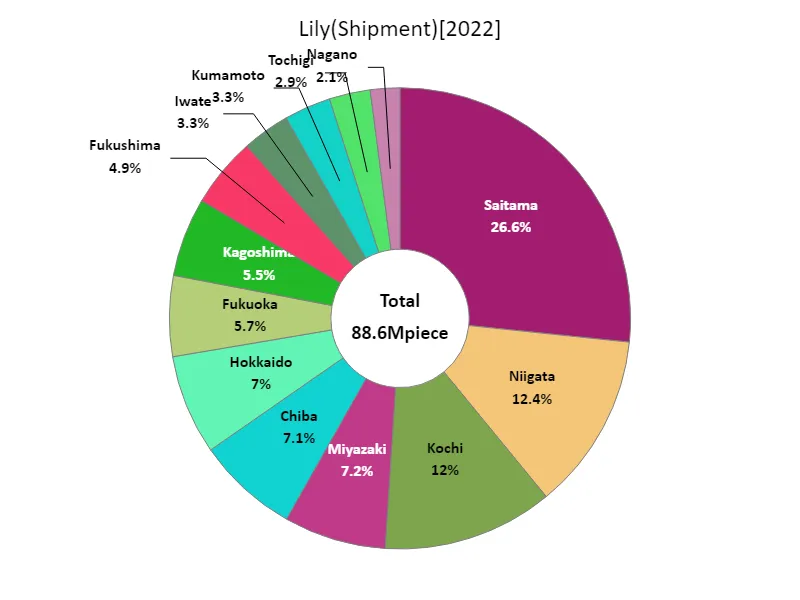

The maximum is 23.6Mpiece of Saitama, the average is 6.81Mpiece, and the total is 88.6Mpiece
Lily cultivation area (main data).
The area of lily cultivation in Japanese agriculture has changed between 1976 and 2022. At its peak in 2000, the area nationwide reached 910 hectares, but has since been on a downward trend. Current acreage is about 70% of its peak, reflecting changes in lily cultivation and trends in agriculture overall. One factor is the diversification of agriculture and changes in the market. In recent years, the demand for other cut flowers and produce has increased, which may be encouraging growers to consider switching or diversifying their crops. In addition, because lilies require specific climatic conditions and soil, changes in the production environment from region to region also affect fluctuations in cultivated area. In addition, technological advances and changes in agricultural policies are also affecting the area under cultivation, and it is possible that producers are seeking more efficient cultivation methods and management strategies. Overall, fluctuations in lily acreage are influenced by complex agricultural factors and are expected to continue to change in response to market demand and environmental factors.
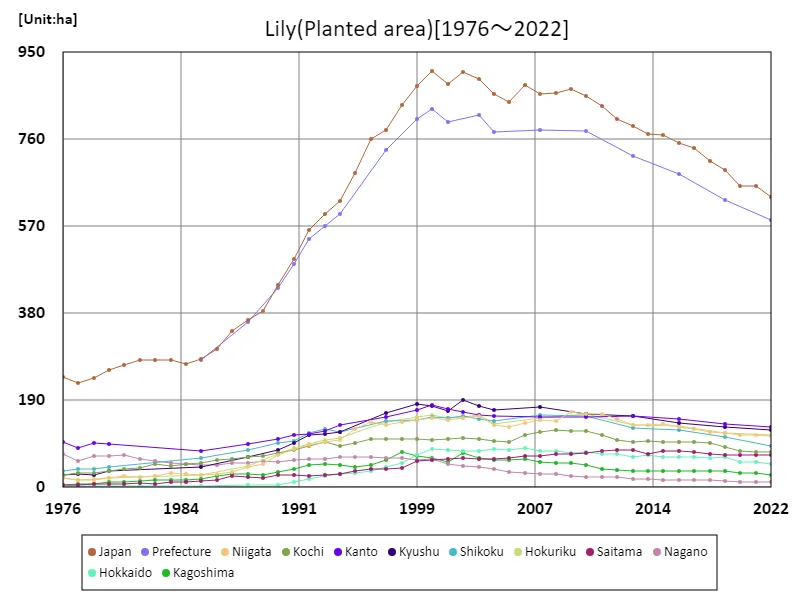

The maximum is 910ha[2000] of Japan, and the current value is about 69.8%
Lily cultivation area (by prefecture).
In Japan’s agriculture, the area planted with cut flowers was calculated by prefecture in 2022, with Niigata Prefecture recording the largest area overall at 113 hectares. A notable feature to date is that the Hokuriku and Tohoku regions, including Niigata Prefecture, have tended to attract attention for cut flower production. This is due to the cool climate and abundant water resources, which are ideal for growing flowers. Also, large areas of agricultural land are available in these regions, providing suitable areas for growing cut flowers. Another factor is that efficient production has become possible in Niigata Prefecture and the surrounding areas due to advances in agricultural technology and the introduction of greenhouse cultivation. On the other hand, in recent years, there has been a trend toward increasing cut flower production in urban areas in response to increased supply and demand in urban areas. As such, production environments and demand change from region to region, but cut flower production, centered in the Hokuriku and Tohoku regions, is expected to continue to play an important role in the future.
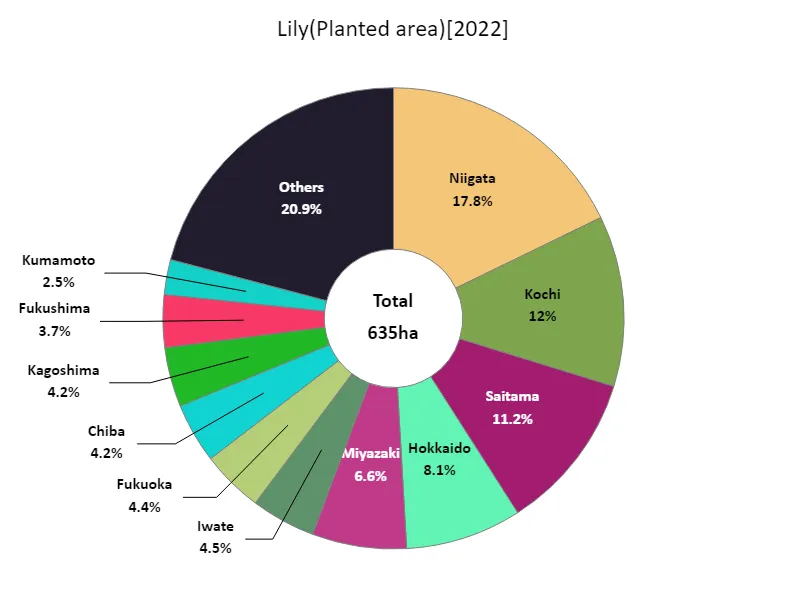

The maximum is 113ha of Niigata, the average is 13.8ha, and the total is 635ha
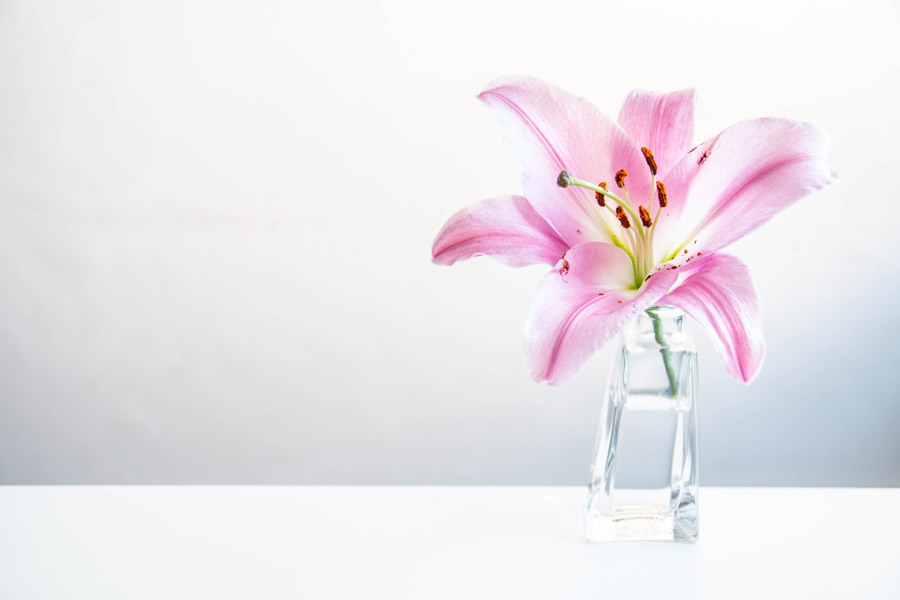


Comments